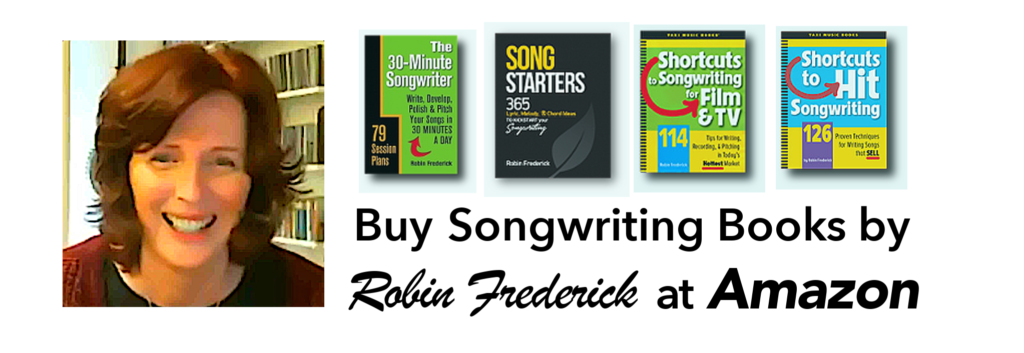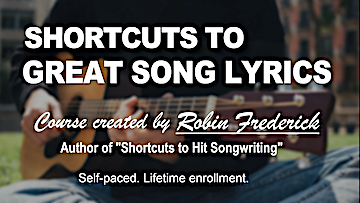Most of today’s hit song structures are made up of of three different sections: Verse, Chorus, and Bridge.
CHORUS: The chorus has the same melody AND the same lyric each time we hear it. The lyrics sums up the emotional heart of the song. It’s the section that listeners will remember and want to hear again and again. Be sure to include your title in your chorus so listeners know what to call your song. The title is often in the first or last line, sometimes both.
VERSE: The verses all have the same melody but different lyrics. A verse takes us deeper into the feelings or situation that created the feelings in the chorus. Because the chorus is repeated three or more times, you can keep it interesting by giving listeners more information in each verse – something that reveals more about the chorus and deepens our feelings or understanding of it.
BRIDGE: The bridge has a different melody and lyric from any other section. It often provides a peak moment or a turning point in the song. You can use the bridge to reveal something hidden or add a twist or just come right out and say what you feel instead of expressing it in images.
PRE-CHORUS: In some songs there’s a short section between the verse and chorus which creates anticipation building up to the chorus. You’re most likely to hear this section in today’s Pop and Country hits, especially hits with big, catchy choruses.
HOOK: The “hook” is the most memorable line in the song. It’s featured in the chorus, usually the first or last line, and it often includes the song’s title.
Putting the song structure together
It’s a good idea to use a proven song structure like this one.
VERSE / CHORUS
VERSE / CHORUS
BRIDGE / CHORUS
You don’t have to, but listeners have expressed a strong preference for songs in this form. A song structure like this provides enough variation and new information to keep listeners interested, and enough repetition to make them feel anchored in the song.
We rely primarily on melody to let listeners know whether they’re listening to a verse, chorus, or bridge. Often, we move the chorus to a higher note range than the verse or change the pace of the notes/words or change the melodic rhythm patterns. This not only lets listener know which section they’re in, it also catches their attention when sections change, keeping them interested in your song.
Try it now
Listen to songs you like and see if you can identify the chorus and verse, then notice how they’re put together to form a structure. Notice how the chorus sums up the emotional message, the heart of the song, while the verses give information and explanations. Then look at how the melody defines each section so you know where you are. Try writing a song that uses a similar structure. It’s one of the best songwriting exercises you’ll ever do!
Watch this video for more tips on song structure.
by Robin Frederick


